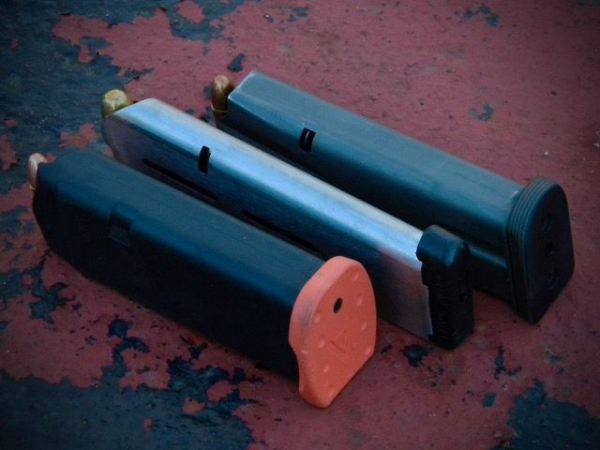
After choosing a handgun for self-defense, your next task is selecting the necessary accessories. Most shooters are familiar with equipment like a proper holster, belt, mag pouches and such. You’ll also need additional magazines, two sets. One set is for training and practice – they get beat up and abused on the range. The others are just for carry. They’ve been tested for function, but are reserved for situations when lives depend on reliability. One part of the magazine that’s often not considered is the base pad. “Base pads,” you ask? Yes, this is an important part of gear that’s essential for proper manipulation of the fighting handgun.
A base pad that extends past the bottom of the pistol’s grip – as opposed to one that’s flush or even - provides several advantages. This extra length helps ensure the magazine seats and locks into the pistol. Often a shooter’s hand, either the strong hand holding the pistol, the support hand that’s holding the magazine or both will get in the way as the mag is inserted, preventing it from locking in place. This is especially true with smaller, compact pistols and/or larger hands. (Seating the mag should be done with the heel of the hand – aggressively - which also helps with this issue.)
We also know that in a fight, conditions are far less than perfect. Most malfunctions are operator induced. You’re a little distracted by the guy trying to kill you, and under stress you’re going too fast or not using enough force to accomplish the task. A little extra length on the magazine helps ensure the mag locks in place.
The same applies when clearing a stoppage. You press the trigger but the pistol doesn’t fire. Your first response is to load the pistol. Come off the trigger, tap to ensure the mag is seated and then cycle the slide to load the chamber. An extended base pad is a benefit to this sequence.
If loading doesn’t solve the problem, you’ve got a Type III stoppage. The pistol is telling you to unload and reload. Unloading starts by removing the magazine. But the slide is applying pressure against the round that can’t feed from the magazine. You can press the mag release, but the mag won’t drop free like it usually does. The most efficient solution is to strip the mag free from the pistol -- as opposed to having to manually lock the slide to the rear to remove pressure from the recoil spring. An extended base pad provides material for the thumb and fingers to grab and strip the magazine. Since a lot of shooters never practice malfunctions, they never see the need to strip the magazine from the pistol. You can lock the slide to the rear, taking pressure off the round that is trying to feed from the magazine – and then you can remove the mag. But this adds an extra step to the sequence, which of course takes time.
A lot of shooters never recognize the need for extended base pads -- especially those who never think about having to manipulate the weapon under less-than-ideal conditions. And remember, malfunctions occur much more often in fights than they do on the range. Repetition and practice are necessary to learn how to fight with a firearm. It also helps when you have the proper gear – even something as small as extended base pads.
Tiger McKee is director of Shootrite Firearms Academy. He is the author of The Book of Two Guns, AR-15 Skills and Drills, has a regular column in American Handgunner and makes some cool knives and custom revolvers. Visit Shootrite’s Facebook page for other details.